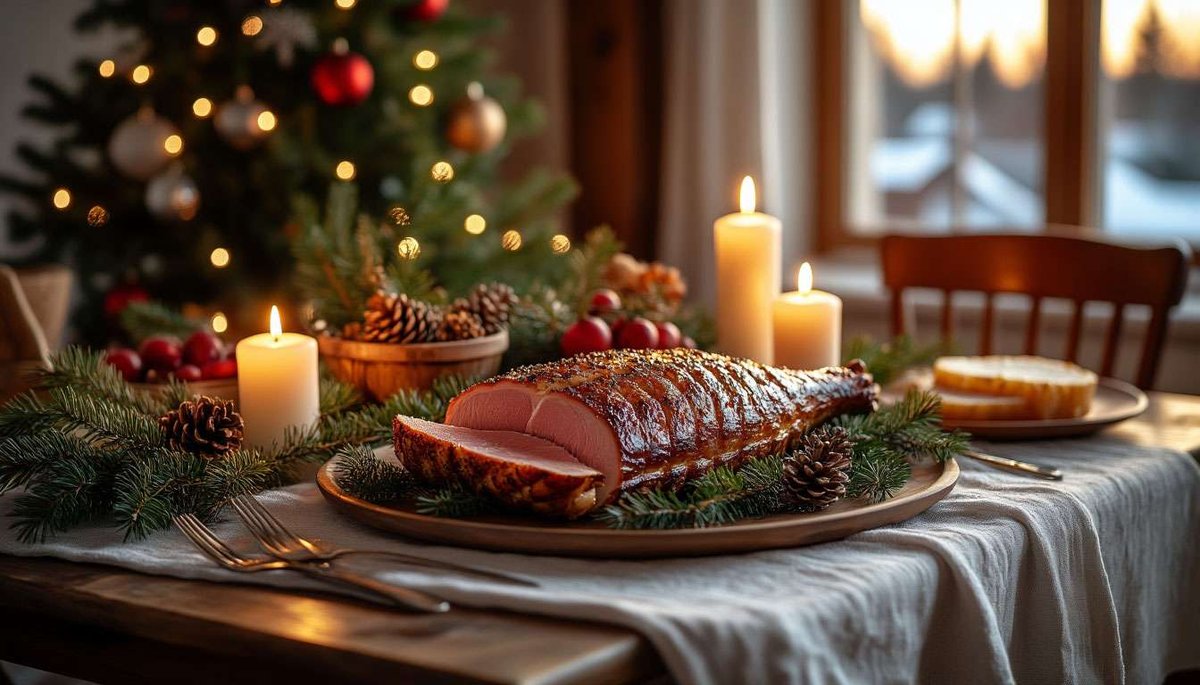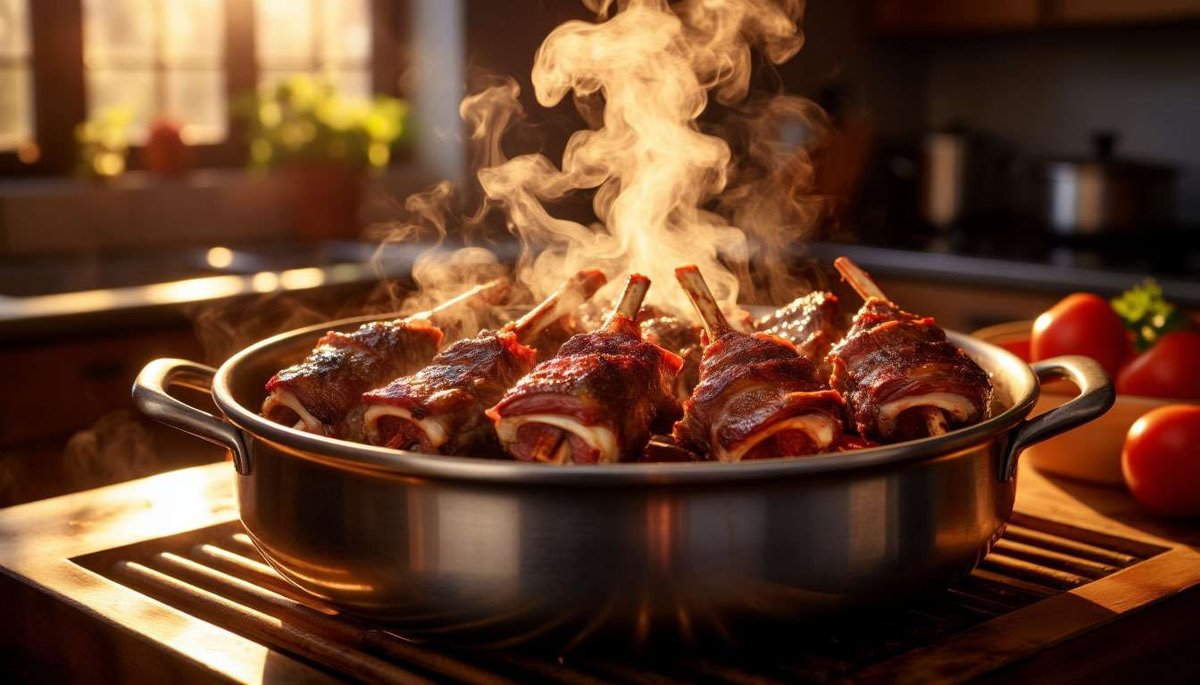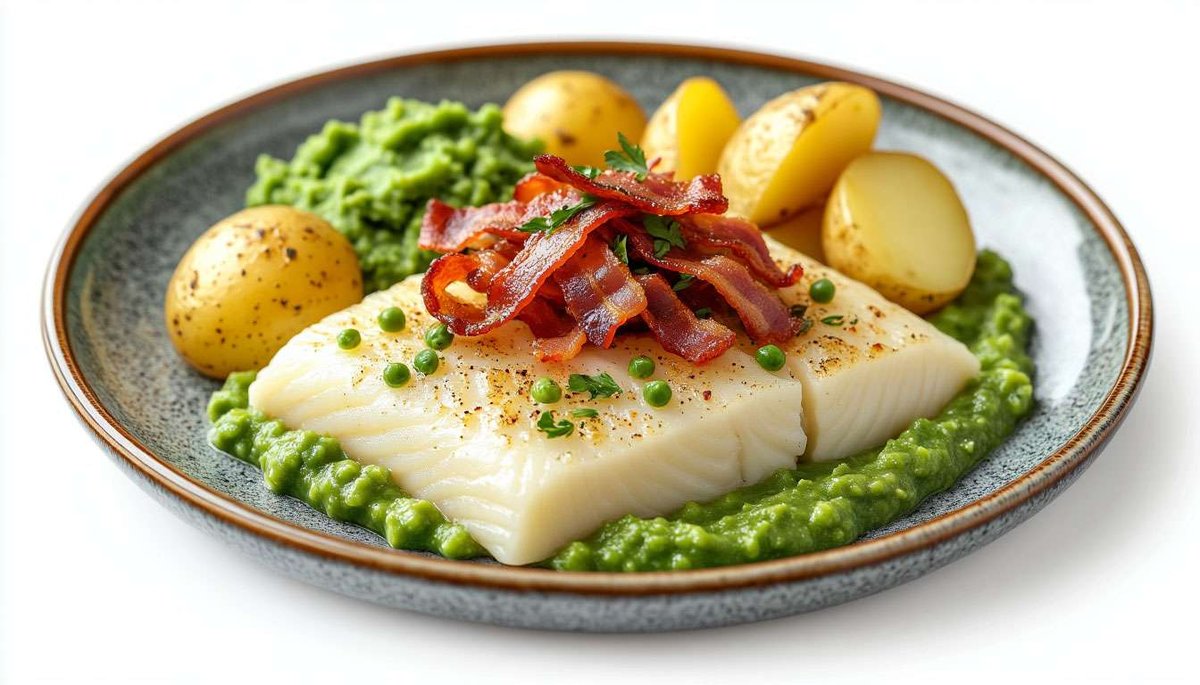Norwegian Christmas table: Ribbe, Pinnekjøtt, Lutefisk and other festive favourites

The December light in Norway fades towards midday, but homes are lit up with Yule lights and the aromas of roast pork, pine smoke and spices. The Christmas table is the highlight of the Norwegian year: each family chooses its "main dish", often passed down from generation to generation. Some roast pork ribs (Ribbe) to a perfect crispy crust, on the west coast they roast lamb (Pinnekjøtt), and northerners prepare the legendary Lutefisk. Let's explore the traditions, recipes and best places for festive tasting.
Why does Ribbe occupy a leading place on the Christmas table?
Ribbe is a thick layer of pork ribs with skin and a layer of fat. The dish became popular in the east and south of the country, where pig farming was accessible. The key to success is the perfect "svor" (skin): it is cut into diamond shapes and rubbed with salt and pepper 24 hours before baking. Ribbe is served with sour sauerkraut (surkål), boiled potatoes and spicy sausages (medisterpølser). In 2023, a Norsk Gallup poll showed that 46% of Norwegians consider Ribbe to be their number one Christmas dish.
What makes Pinnekjøtt a unique tradition on the west coast?
Pinnekjøtt is salted and dried lamb ribs. Before cooking, they are soaked for 24 hours, then placed on a "rack" made of birch sticks (pinner) inside a pot and steamed for 2–3 hours. The meat turns out tender, with a slight smoky flavour if the ribs have been lightly smoked. In Bergen and Stavanger, Pinnekjøtt is eaten on 24 December, served with rutabaga purée (kålrotstappe) and local beer juleøl.

How is the mysterious lutefisk prepared, and why is it not loved by everyone?
Lutefisk is dried cod that is soaked in water for five days, then in an alkaline lime solution for two days. The fish swells and becomes jelly-like, after which it is soaked again until it reaches a pH level suitable for consumption. It is baked or boiled for 15 minutes and served with pea purée, bacon, mustard and potatoes. The taste is mild, but the texture is unique; the dish is loved by the older generation and gourmet tourists. Best restaurants: Lorry (Oslo) and To Kokker (Bergen) during the season from November to January.

What side dishes and drinks accompany festive dishes?
- Ribbe: surkål, Brussels sprouts, juleøl beer + Linie aquavit.
- Pinnekjøtt: rutabaga purée, boiled potatoes, Ægir Christmas Ale.
- Lutefisk: pea purée, mustard, a glass of Riesling Kabinet or aquavit Gilde Non Plus Ultra.
Non-alcoholic classic – spicy non-alcoholic glogg with raisins and almonds.
What sweets round off Norwegian Christmas?
After the main course, Riskrem is served – a rice pudding with whipped cream and cherry sauce. One almond is hidden in the pudding: whoever finds it receives a "mandelgave" – a small gift. A plate of "seven kinds" of cookies (see previous article) is also placed on the table, and a hot chocolate drink with marshmallows is prepared for children.
Where can tourists try the Christmas menu if they are in Norway in December?
| City | Restaurant | Popular dish | Price for a julebord set |
|---|---|---|---|
| Oslo | Kafe Løve (Det Norske Teatret) | Ribbe buffet | 595 NOK |
| Bergen | Bryggen Tractor Station | Pinnekjøtt + Riskrem | 645 NOK |
| Trondheim | To Romer & En Bass | Lutefisk evening | 625 NOK |
| Tromsø | Fiskekompaniet | "Arctic Christmas" (fish/crab) | 695 NOK |
The Norwegian Christmas table is a symphony of contrasts: the crunch of Ribbe, the salty aroma of Pinnekjøtt, the velvety Lutefisk jelly and the sweet cream of rice pudding. Cook pork ribs with perfect crackling at home, try steaming a couple of lamb ribs on birch sticks, or book a table at Bergen Bryggen to experience the original taste of Yule. To the clink of aquavit glasses and the twinkling of Advent lights, the north reveals itself in its warmest and most aromatic form. God Jul!





2 comments
Log in to leave a comment